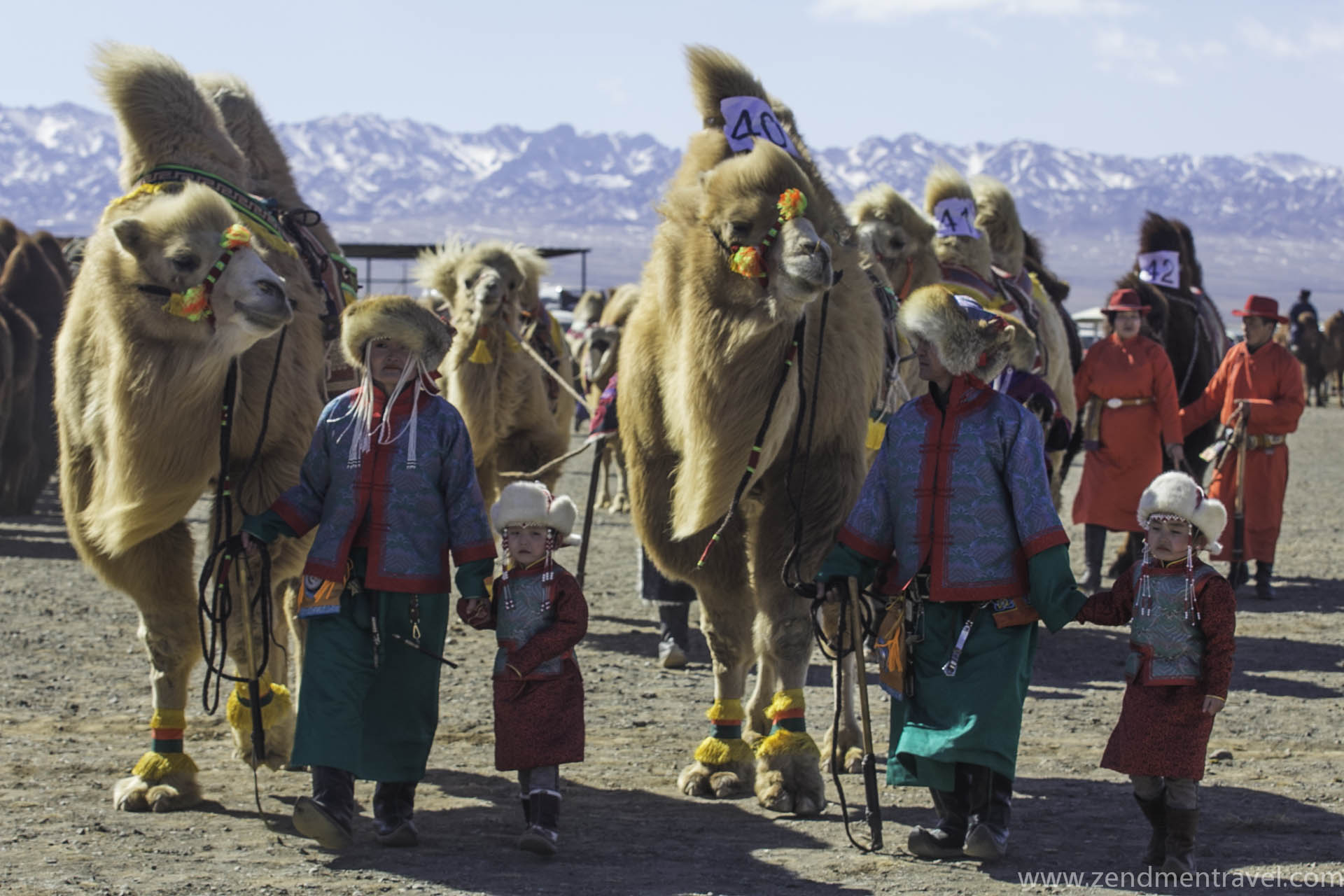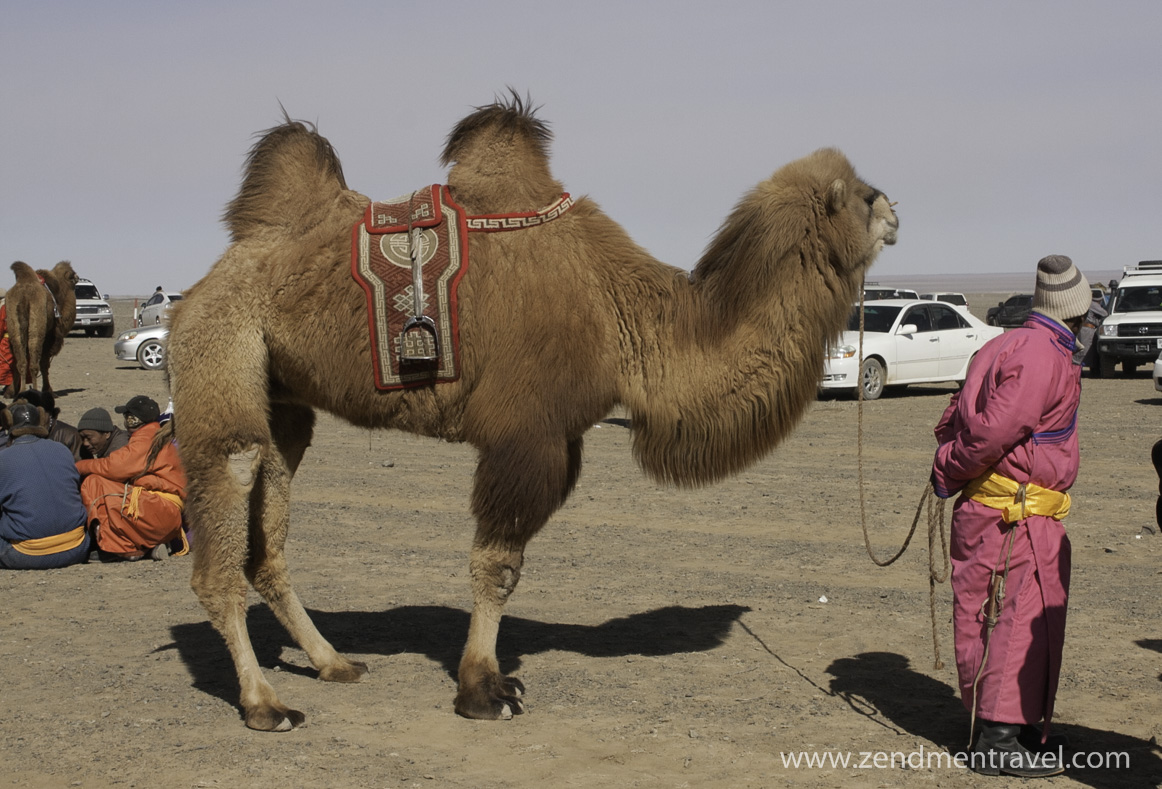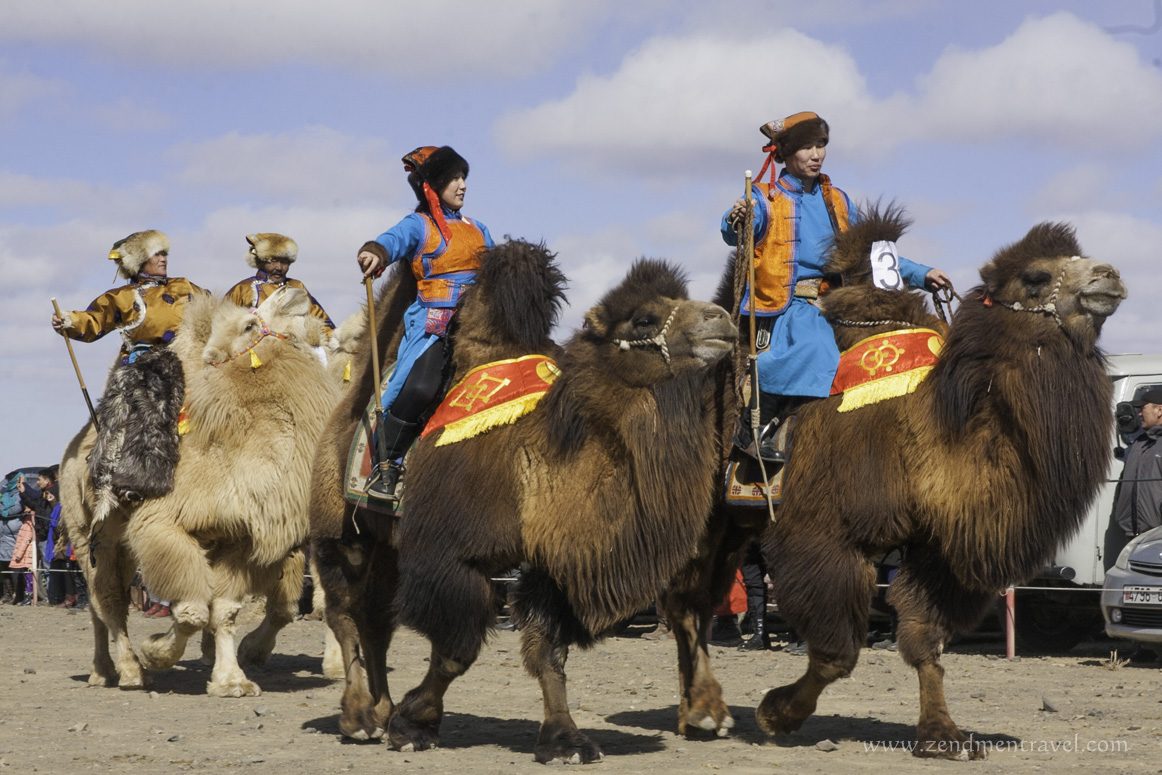What to know about two-humped Bactrian Camel? What is interesting about Bactrian Camel?
Mongolia is home to the largest number of two-humped Bactrian camels in the World. Both the domestic Bactrian camel (Camelus bactrianus) and Wild Bactrian Camel (Camelus ferus) or Havtgai spread across the southern part of Mongolia, specifically in the Gobi Desert.
The wild Bactrian camel is a critically endangered species and is in the Gobi Desert, Mongolia, and Taklamakan Desert, China. In Mongolia, the Great Gobi National Park is home to some 700 wild camels, while you can spot a captive Wild Camel in Zagiin Us Reserve near Mt Eej in Gobi- Altai province, southwestern Mongolia.
Camels are well adapted to Gobi’s arid harsh climate where temperatures fluctuate between +48C to – 35C. Vegetation is sparse and water is scarce; the Gobi genuinely challenges the survival of both domestic and wild Bactrian Camels. Camel, therefore, can drink 135 liters of water easily and live without water for up to a month. In the past, camels played a major role in the transport along the Silk Road and the Tea Road between Asia and Europe. Nowadays, Mongolian nomads still use camels as pack animals for their seasonal migration.
In rural Mongolia, especially in arid places, camel milk is a local delicacy. Camel wool is particularly important for Mongolian culture in which camel wool threads are used for sowing felt carpets and stitching trims of felt covers for a nomadic dwelling, ger. Nowadays, baby camel wool is considered as valuable as cashmere to produce luxury garments and clothing. Mongolian producers of Gobi, Goyo, and Buyan manufacture luxury camel wool textiles and outfits.
Camel milk has medicinal qualities and is also a rare threat. Camels lactate for up to two years and give birth once every two years. Kidney problems and swollen parts of the human body are treated by drinking fermented camel milk. During its mating season in December-January, when the weather is extremely cold in Mongolia, the camel gets extremely self-defensive and aggressive. Therefore, nomads hung red cotton flowers on the camel’s forehead as a warning of aggressive camel that might attack other people.

There were 895.3 thousand domestic camels in Mongolia in 1954. Currently, there are 367,000 domestic Bactrian Camels while Umnugovi province has the largest number of camels (118.6 thousand) followed by Bayankhongor (44.5 thousand) and Dornogovi (36.03 thousand) provinces in Mongolia. No wonder why Umnugovi province hosted the largest camel race in the world covering 1,108 participants on 7 March 2015 during the annual Thousand Camel Festival. The Guinness Record Holding event was organized by the Administrative Office of the Umnugovi province. Due to the decreased number of camels since 1954, camel festivals are organized in Mongolia to promote camel culture and to facilitate nomadic herders to increase their camel herd.

During the camel race, some camels from Bayanhongor province were barred from racing. Since these were believed to be hybrid breeds between Domestic Bactrian Camel and Wild Bactrian Camel. These hybrid camels look slimmer and with longer legs in comparison to domestic camels. They can be the fastest of all and can be ideal for racing.
In partnership with the Administrative Office of Umnugovi province and the Amazing Gobi Tourism Association, the annual “Ten Thousand Camel Festival” celebrates Mongolia’s rich camel culture. This is where you can immerse yourself in the excitement of camel races, camel polo, and various contests that boost the essence of nomadic culture.
Relateable tours:
The Gobi Desert Tour
Winter Festivals Mongolia tour







